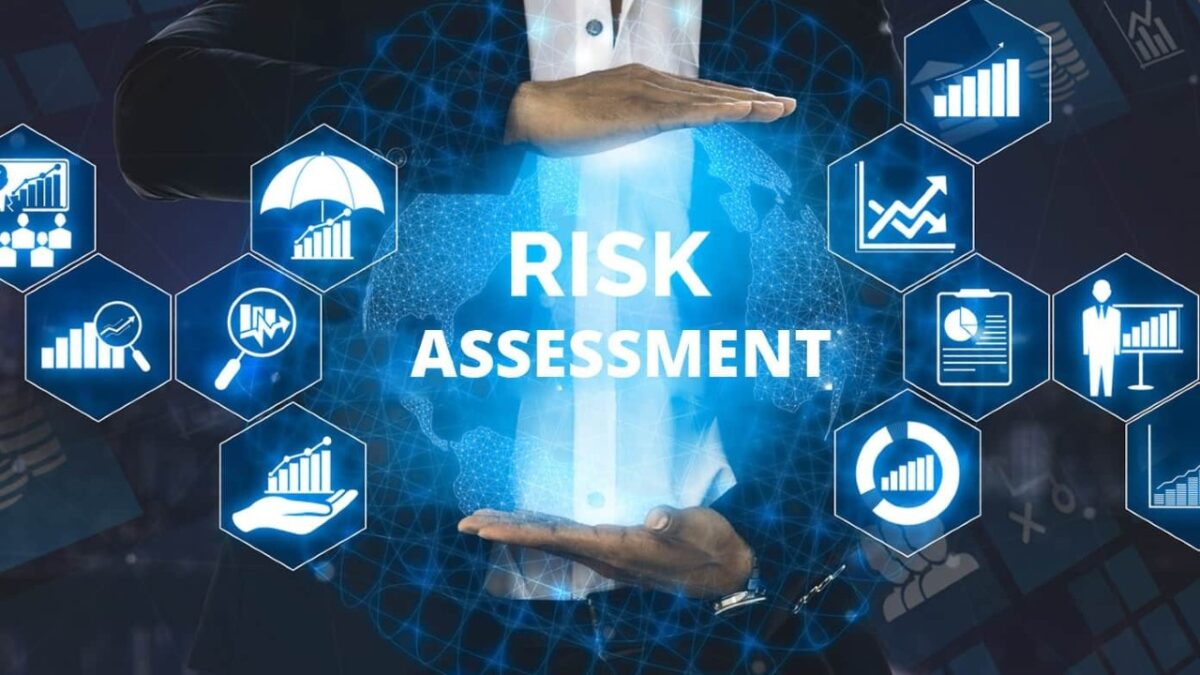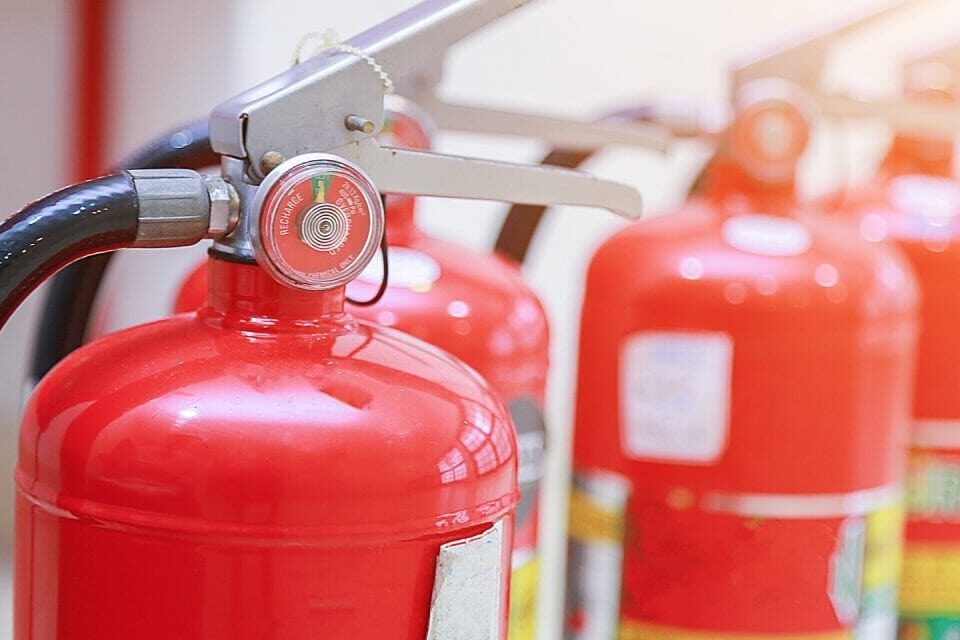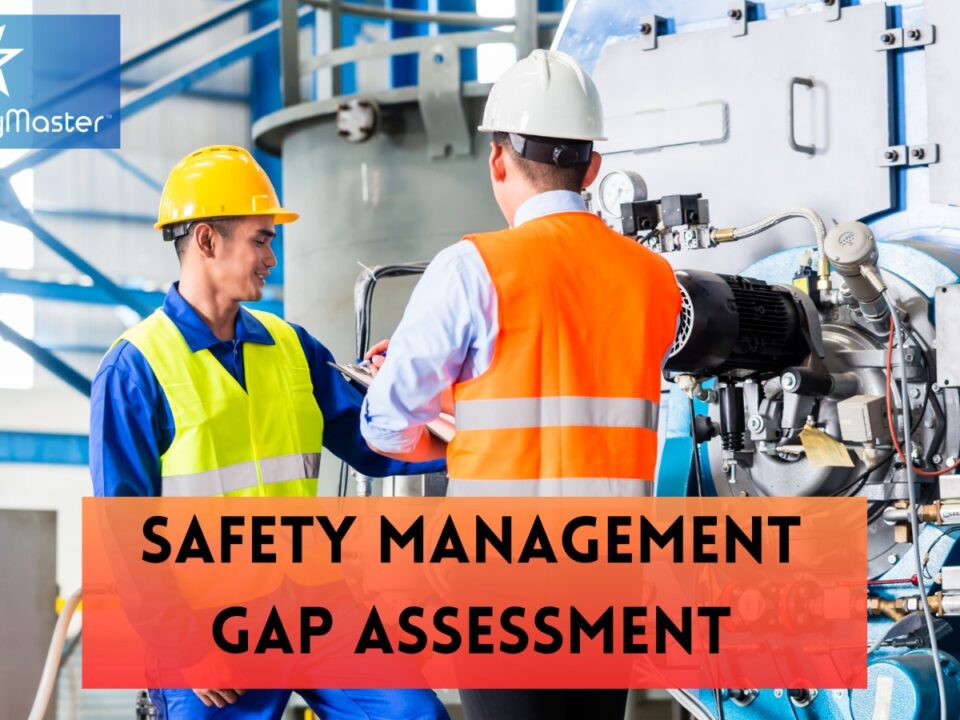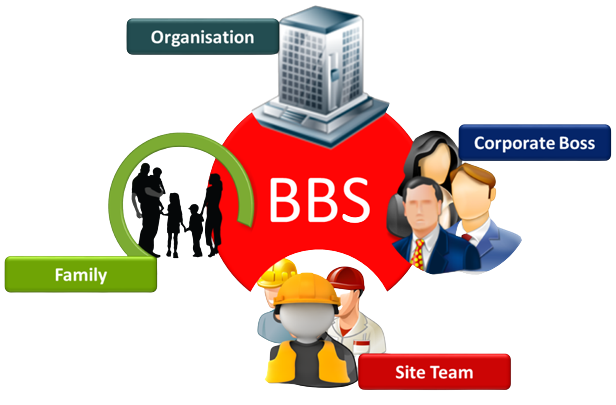Safety Risk Assessment by What if Analysis, FMEA and Checklist Method

Integrated Management System Internal Auditor Training by TheSafetyMaster
September 28, 2023
Effective Initiatives for Behavior-Based Safety Training and Implementation – The Safety Master
September 29, 2023Every day, we navigate a world filled with potential risks and hazards. Whether it’s in our personal lives or in the professional realm, safety is paramount. The importance of identifying and mitigating potential risks cannot be overstated. This is where safety risk assessment comes into play.
In this article, we will delve into the fascinating world of safety risk assessment by exploring three powerful methods: What if Analysis, Failure Mode and Effects Analysis (FMEA), and the Checklist Method. We will uncover their intricacies, understand their applications, and learn how they can be effectively employed to enhance safety in various contexts.
As you embark on this journey with us, expect to gain a deep understanding of these methodologies and their practical implications. We will provide you with step-by-step guides, real-life examples, and expert insights to assist you in implementing a comprehensive safety risk assessment strategy. By the end of this article, you’ll be armed with valuable knowledge that will empower you to proactively address potential risks while instilling a sense of security in your endeavors.
Understanding the Importance of Safety Risk Assessment
When it comes to any endeavor involving safety, taking a proactive approach is paramount. Safety risk assessment plays a pivotal role in identifying potential hazards and implementing strategies to mitigate them effectively. By thoroughly understanding the importance of safety risk assessment, we equip ourselves with the knowledge and tools necessary to safeguard lives, protect assets, and ensure smooth operations.
Safety risk assessment serves as a crucial foundation for any organization or individual striving to create a secure environment. It allows us to anticipate and address hazards before they manifest into accidents or incidents that could have devastating consequences. Through comprehensive assessments, we gain insight into potential risks, prioritize mitigation efforts, and cultivate a culture of continuous improvement.
Why What if Analysis is a Valuable Tool for Risk Assessment
In the realm of safety risk assessment, one tool stands out for its ability to uncover potentially catastrophic scenarios: the What if Analysis. With its thought-provoking nature, this methodology prompts us to dive deep into the realm of possibilities and explore the potential consequences of unforeseen events. By asking “what if” questions, we challenge conventional thinking and open ourselves up to a world of creative problem-solving.
What makes What if Analysis so valuable is its ability to stimulate our imagination and push us beyond the boundaries of what we consider typical risks. It compels us to envision worst-case scenarios that may seem far-fetched but have the potential to become reality. By doing so, we gain a broader perspective on safety risks and can develop proactive measures to prevent them from occurring. This powerful tool empowers organizations to think outside the box and anticipate potential dangers that might have otherwise gone unnoticed.
Step-by-Step Guide to Conducting a What if Analysis for Safety Risk Assessment
In order to effectively assess safety risks using the What if Analysis method, a systematic approach must be followed. Here is a step-by-step guide that will help you navigate through the process:
1. Define the scope and objectives: Clearly identify the system, process, or activity that requires risk assessment. Determine what specific safety risks need to be evaluated and establish clear objectives for the analysis.
2. Assemble a diverse team: Bring together experts from different disciplines who possess relevant knowledge and experience. This diversity of perspectives will enrich discussions and enhance the effectiveness of the analysis.
3. Identify potential hazards: Brainstorm and create a comprehensive list of potential hazards associated with the system or activity under consideration. Encourage team members to think creatively and consider all possible scenarios.
4. Analyze causes and consequences: For each identified hazard, explore various causes that could lead to its occurrence. Evaluate the potential consequences in terms of severity, likelihood, and impact on safety.
5. Generate “What if” questions: Develop specific “What if” questions based on different scenarios related to each hazard and its causes. These questions should prompt discussions about possible risks, failures, malfunctions or deviations from normal operation.
6. Facilitate structured discussions: Encourage open dialogue among team members while systematically addressing each “What if” question generated in the previous step. Analyze potential outcomes, identify control measures or safeguards that could mitigate risks, and document all findings thoroughly.
“The journey towards risk mitigation begins with meticulous planning;
Unleashing the Power of FMEA in Identifying and Mitigating Safety Risks
FMEA, or Failure Mode and Effects Analysis, is a powerful methodology that plays a vital role in identifying and mitigating safety risks. By systematically examining potential failure modes, their causes, and the potential effects on safety, FMEA enables organizations to proactively address vulnerabilities.
At its core, FMEA focuses on prevention rather than reactive measures. It encourages teams to think deeply about every possible failure mode associated with a particular process or system. This comprehensive analysis helps identify high-risk areas and prioritize actions that can minimize or eliminate potential hazards.
One of the greatest strengths of FMEA lies in its ability to uncover hidden risks through rigorous examination. By breaking down complex processes into manageable components, it becomes easier to identify failure modes and understand their underlying causes. This approach empowers organizations to take preemptive measures that enhance safety measures, ensuring a reliable and secure environment for all stakeholders involved.
How to Apply the FMEA Methodology to Assess Safety Risks Effectively
When it comes to assessing safety risks, the Failure Mode and Effects Analysis (FMEA) methodology proves to be an invaluable tool. By systematically identifying potential failure modes, their causes, and their effects, FMEA enables organizations to proactively mitigate safety risks before they manifest as incidents or accidents.
To apply the FMEA methodology effectively, one must follow a structured approach. Start by assembling a multidisciplinary team consisting of experts from various relevant fields. This collaborative effort ensures a comprehensive analysis that takes into account diverse perspectives and expertise.
The first step is to define the scope of the analysis and clearly identify the system or process under examination. Then, break down this system or process into its individual components or steps. For each component or step, brainstorm and list all potential failure modes that could occur.
Next, assess the severity of each identified failure mode by considering its potential impact on safety. Assign a numerical value to denote severity levels, which can range from minor inconveniences to catastrophic consequences.
After determining severity levels, evaluate the likelihood of occurrence for each failure mode. Consider factors such as historical data, expert judgment, and statistical analysis when assigning likelihood values. The goal is to gauge how frequently these failure modes may arise in real-world scenarios.
The next parameter in assessing safety risks through FMEA is detection capability. Determine how likely it is for your existing controls and systems to detect these failure modes before they result in adverse outcomes. Again, assign appropriate numerical values based on your evaluation.
Multiply severity by occurrence and detection values to obtain a
Enhancing Safety with the Checklist Method: A Practical Approach
The checklist method is a straightforward yet powerful tool for enhancing safety in various contexts. By systematically evaluating potential risks and ensuring compliance with established standards, organizations can proactively identify and address safety concerns. The checklist method provides a structured framework that enables thoroughness and consistency in assessing safety risks.
When utilizing the checklist method, it is essential to create a comprehensive list of safety criteria specific to the task or environment being evaluated. This list should encompass all potential hazards, ensuring that no aspect of safety is overlooked. By diligently checking off each item on the list, organizations can ensure that necessary precautions are in place, mitigating risks effectively.
A key advantage of the checklist method lies in its simplicity and user-friendliness. It can be easily understood and implemented by individuals at all levels within an organization. This empowers employees to actively participate in promoting safety, fostering a culture of vigilance and accountability. By encouraging regular utilization of checklists, organizations can foster a proactive approach toward safety risk assessment, ultimately minimizing incidents and creating a secure working environment.
Implementing a Comprehensive Safety Risk Assessment Strategy Using Multiple Methods
When it comes to ensuring maximum safety in any environment, adopting a comprehensive approach is paramount. Implementing a multi-method strategy for safety risk assessment allows organizations to gain a holistic understanding of potential risks and effectively mitigate them. By combining various methods such as What if Analysis, Failure Mode and Effects Analysis (FMEA), and the Checklist Method, businesses can create a robust framework that leaves no stone unturned.
The synergy of these different methods brings forth unique strengths that complement one another. What if Analysis encourages creative thinking by exploring hypothetical scenarios to uncover unforeseen risks. FMEA delves deep into system processes, identifying failure modes and their potential effects on safety. And the Checklist Method serves as a valuable tool for systematically evaluating compliance with established safety standards.
Case Study: Real-Life Examples of Successful Safety Risk Assessments
Let us delve into the realm of practicality and explore real-life examples that highlight the effectiveness of safety risk assessments. In one case, a renowned manufacturing company implemented a comprehensive safety risk assessment strategy using the What if Analysis, FMEA, and Checklist Method. By applying these methods, they were able to identify potential hazards in their production line, including faulty machinery and inadequate safety protocols.
The company took immediate action by conducting a thorough analysis through the What if Analysis technique. They envisioned various scenarios and evaluated the potential consequences of each. This allowed them to proactively address potential risks before they manifested into accidents or workplace injuries. Additionally, by incorporating FMEA into their assessment process, they were able to prioritize risks based on severity and likelihood.
The Benefits of Adopting a Proactive Approach to Safety Risk Assessment
A proactive approach to safety risk assessment is not only necessary but also highly advantageous in today’s rapidly evolving world. By being proactive, organizations can stay ahead of potential safety risks, identify vulnerabilities before they escalate into critical incidents, and ensure the well-being of their employees and customers.
One significant benefit of adopting a proactive approach is the ability to prevent accidents and injuries proactively. Instead of waiting for incidents to occur and reacting afterwards, organizations can anticipate potential risks through thorough risk assessments. This allows them to implement preventive measures promptly, mitigating hazards and reducing the likelihood of accidents. By doing so, businesses safeguard their reputation, maintain customer trust, and minimize financial losses associated with workplace accidents.
Overcoming Challenges in Safety Risk Assessment: Tips and Tricks
Though safety risk assessment is a crucial process, it comes with its fair share of challenges. However, armed with the right knowledge and strategies, you can navigate these obstacles to ensure effective risk management. One common challenge is the lack of comprehensive data or information on potential risks. To overcome this hurdle, it is essential to conduct thorough research and gather as much relevant data as possible from reliable sources.
Another challenge lies in assessing the likelihood and severity of risks accurately. Here, adopting a proactive mindset can make all the difference. Rather than merely relying on historical data or assumptions, engage in brainstorming sessions with experts to identify potential scenarios that may pose risks. This collaborative approach allows for a broader perspective and enables you to assess risks more comprehensively.
In addition, addressing communication gaps within your organization is vital for successful safety risk assessment. Encourage open dialogue between departments and individuals involved in the assessment process to ensure all perspectives are heard and considered. Fostering a culture where reporting near misses or potential hazards is encouraged can also enhance the accuracy of your risk assessments.
Avoiding complacency is essential when facing safety challenges. Continuously updating your knowledge base regarding industry standards and best practices will enable you to stay ahead of emerging risks. Embrace technological advancements that facilitate efficient risk assessment processes, such as digital platforms or specialized software tools.
Lastly, maintaining a positive mindset throughout the safety risk assessment journey plays an integral role in overcoming challenges effectively. View these obstacles as opportunities for growth rather than setbacks, and approach each one with determination and optimism.
Conclusion
In conclusion, Safety Risk Assessment plays a vital role in ensuring the well-being of individuals and the smooth functioning of organizations. The combination of What-if Analysis, FMEA, and the Checklist Method provides a powerful toolkit for identifying, analyzing, and mitigating potential safety risks. By adopting a proactive approach to safety risk assessment and implementing these methodologies effectively, businesses can create safer environments, protect their assets, and enhance overall operational efficiency. Remember, when it comes to safety, being prepared is not just a precautionary measure; it is an investment in the future well-being and success of your organization. So embrace these methods with confidence, knowing that by doing so you are taking significant steps towards minimizing risks and maximizing safety.




